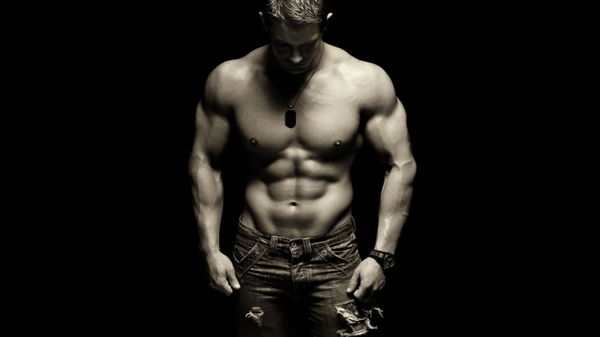

The one thing people do even before starting their fitness and bodybuilding journey is to check their body type. The prevalent concept of body types, or somatotypes, comes from researcher Dr. W.H. Sheldon. In the early 1940s, Sheldon theorized that humans can be classified into three body types. Sheldon named these three body types as ectomorph, mesomorph, and endomorph.
Sheldon divided these body types based on metabolism, the ability to lose and gain weight, and the ability to build lean muscle. The researcher theorized people with the best metabolism and ability to gain muscle and lose fat are mesomorph. Naturally, they are among the most athletic, but what about the other two types when it comes to bodybuilding? Does Sheldon’s theory still hold up?
ADVERTISEMENT
Article continues below this ad
Which body type has the hardest time gaining muscle?
We’ve already established that Sheldon described mesomorphs as the people with the best ability to build muscle. Yet, what characteristics do ectomorphs and endomorphs exhibit? Sheldon explained that ectomorphs have narrow shoulders and hips and have naturally low body fat percentages. However, they also lack muscle mass, and their high metabolism makes bodybuilding a difficult endeavor.

On the other hand, the research described endomorphs as stockier individuals. Compared to mesomorphs, their hips are wider, and their shoulders are less broad. They tend to carry muscle but also body fat. Making things worse for bodybuilding is their slow metabolic rate, which prevents them from shedding fat with ease. However, positive lifestyle changes can speed up their metabolism.
So, going by Dr. W.H. Sheldon’s theory, ectomorphs have the hardest time with hypertrophy. Endomorphs naturally have more muscle mass, and bodybuilding training and cardio can significantly improve their slow metabolism. However, it’s much harder for an ectomorph to slow their metabolism. However, the somatotype classification theory has come under serious scrutiny.
What does modern research say about somatotypes and bodybuilding
Since the advent of Dr. Sheldon’s theory in the 1940s, research on body composition and how it affects performance has been conducted. While some parallels exist between Dr. Sheldon’s somatotype research and the results from the subsequent research, the human body is still far too diverse to classify into three narrow definitions. However, body types do not adhere to the narrow definition of the three types.
In fact, modern research has found that the somatotypes do not dictate the individual physiological markers, and it’s the other way around. New research has found that while the human body does exhibit similarities with Sheldon’s theory, the state is fluid. Any given individual at certain points in their lives, depending on their activity level can match either of the three definitions, excluding bone structure.
While one can’t change their bone structure, factors like metabolism, athleticism, strength, cardiovascular capacity, and muscle mass depend on lifestyle, bodybuilding training, sleep, recovery, and other markers. An experienced bodybuilder will gradually feel diminished gains as they get closer to their genetic potential, regardless of the fact whether they are mesomorph, endomorph, or ectomorph.
Why has the theory persisted in bodybuilding training?
One of the reasons why Sheldon’s theory remains popular is because it was a norm for so long. While advanced lifters, bodybuilding coaches, and science-based lifters continue to keep up with the latest research, not everyone is as up-to-date. Another reason is that determining which body type a person falls into also helps them set a starting point. Many people and trainers design a workout, keeping the somatotype in mind.
ADVERTISEMENT
Article continues below this ad

However, the National Academy of Sports and Medicine recommends that professionals pay attention to an individual’s physiology immediately after determining which of the three body type descriptions closely relate to their client. Someone who starts with a slow metabolism and more body fat can exhibit mesomorph-like physiological characteristics with bodybuilding training.
ADVERTISEMENT
Article continues below this ad
Hence, while it might seem that the ectomorph and endomorph have an uphill battle, they can recompose their body with bodybuilding training. For example, even resting metabolism picks up once a person starts gaining muscle. So, no matter which part of the body type spectrum a person falls into, bodybuilding success depends mostly on training, diet, and recovery.
ADVERTISEMENT
ADVERTISEMENT
ADVERTISEMENT
ADVERTISEMENT

